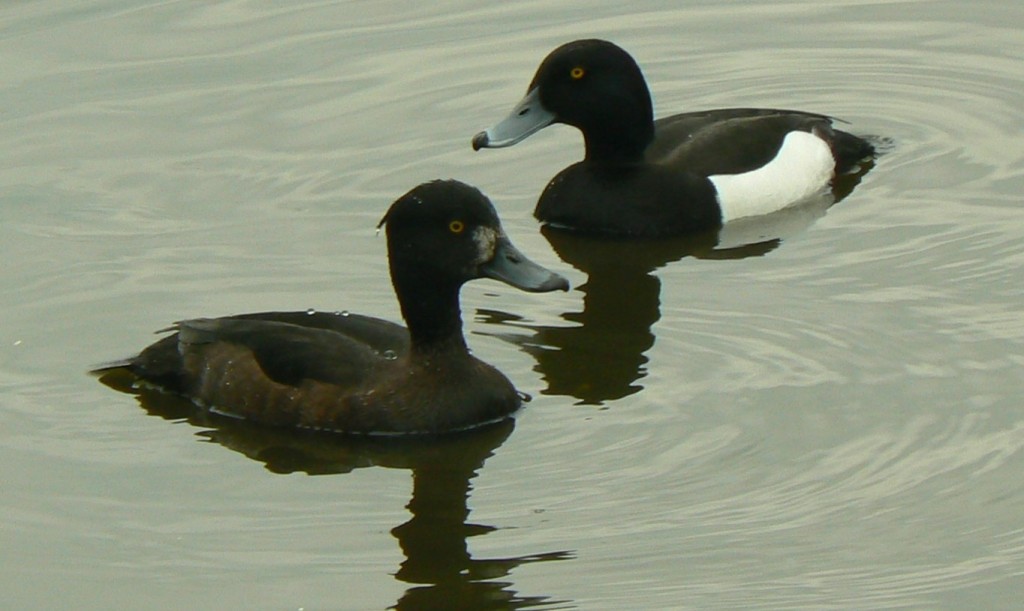
[047] Aythya fuligula, Tufted Duck
Aythya ferina, Pochard
Introduction
Aythya fuligula, the Tufted Duck, and Aythya ferina, the Pochard, are two diving ducks commonly seen in Britain. The females are more similar in appearance than the males.
There are five other species (Aythya and Netta) called Pochards, so purists may call the familiar one the Common Pochard.
Taxonomy
Kingdom – Animals
Phylum – Chordates
Class – Aves (Birds)
Order – Anseriformes (Waterfowl)
Family – Anatidae (Ducks, Geese and Swans)
Genus – Aythya
Scientific Names – Aythya fuligula, Aythya ferina
Names
The tuft on the male Aythya fuligula is very obvious. Aythya comes from an unspecified seabird mentioned in Ancient Greek by Aristotle and others. ‘Fuli-gula’ from Latin roots means ‘sooty-throat.’
Pochard is cognate with poker and Wiktionary asserts that sometimes the Pochard may be called a poker. ‘Ferina’ just means wild.
Description
We have seen a few ducks and [023] Mallard included some general notes about ducks. These two are Diving Ducks, which doesn’t make them look particularly different. Both are sexually dimorphic.
The male Tufted Duck is mostly black with white side panels. He has a metallic blue bill, a bright yellow eye and a prominent tuft at the back of his head.

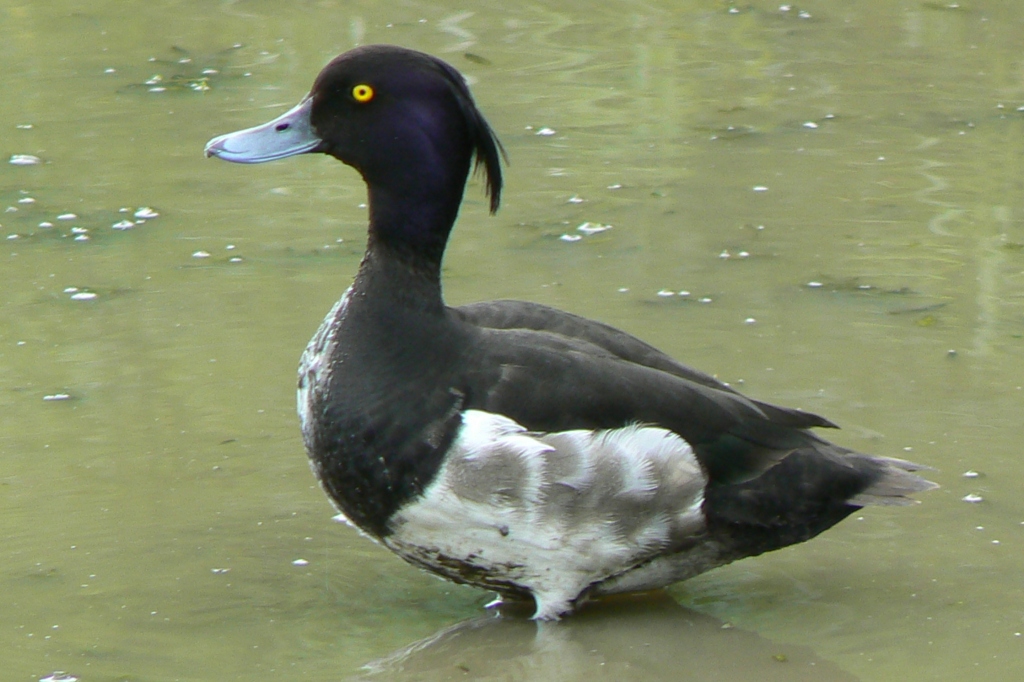
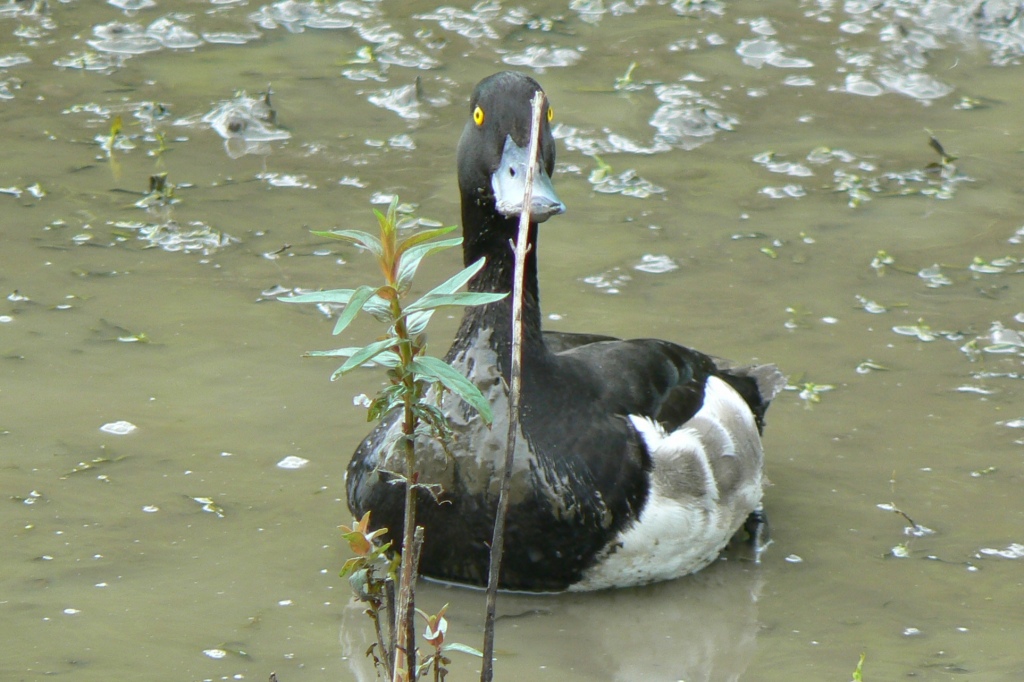

The female Tufted Duck is mostly dark brown, even darker on her back. She has the yellow eye and metallic bill of the male and may have a very small tuft.
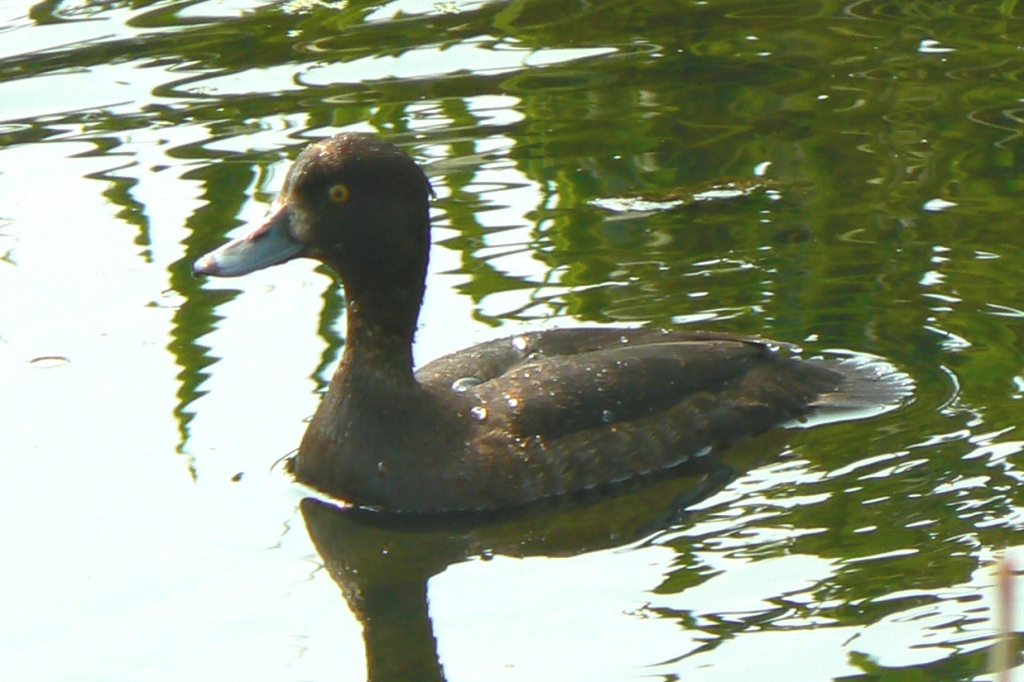
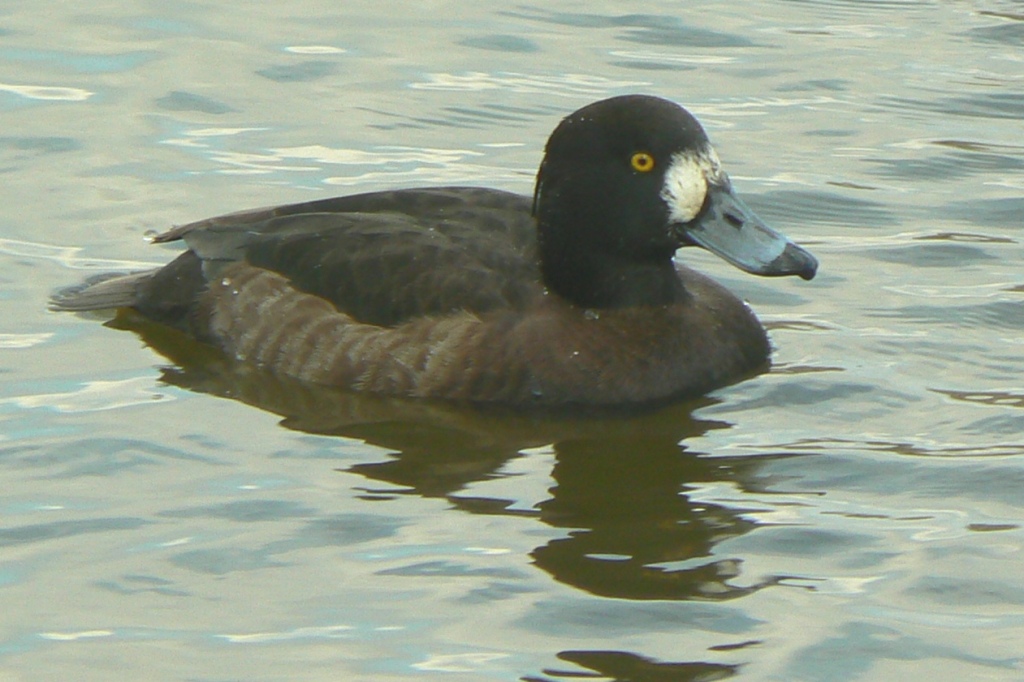
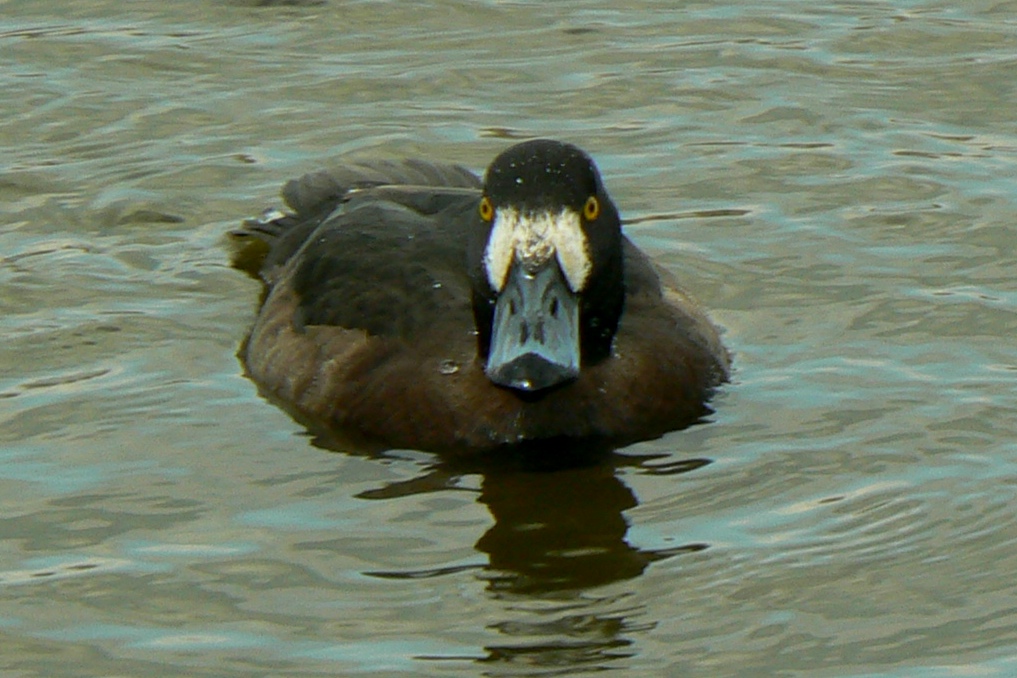
The extent of the white over the bill is variable and it is usually absent. It can make her look more like a Scaup.
The male Pochard is predominantly a light silver-grey with black breast and tail and a dark red-brown head. His bill is partly the same metallic blue and partly black. The dark red eye merges with the colour of his head and can be almost invisible.

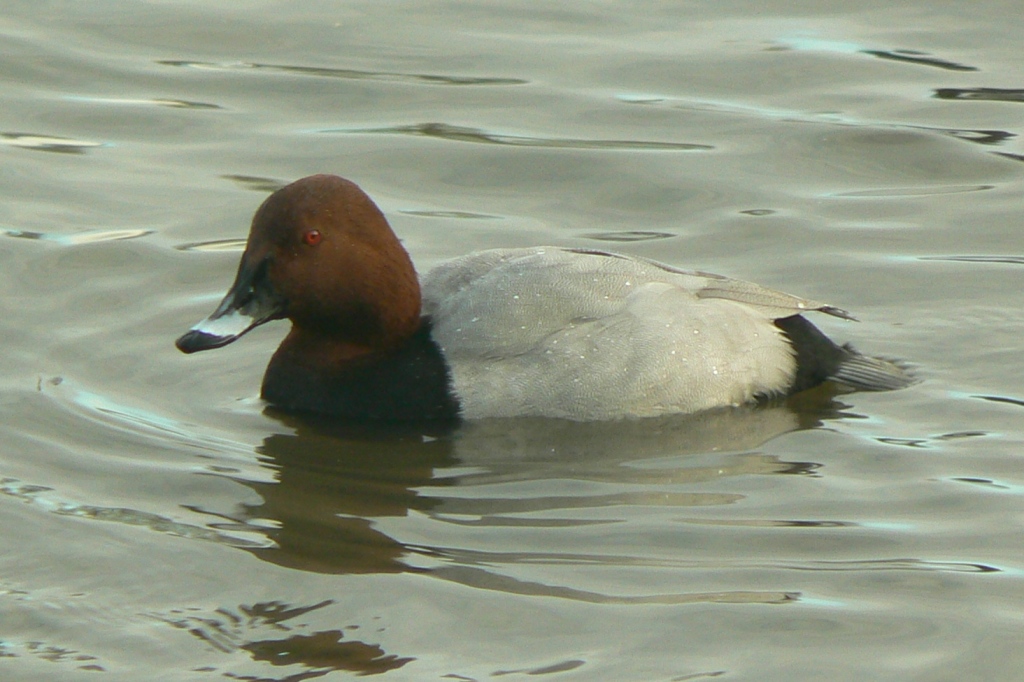
The female Pochard is mostly greyish brown. The eyes and bill distinguish her from the female Tufted Duck.
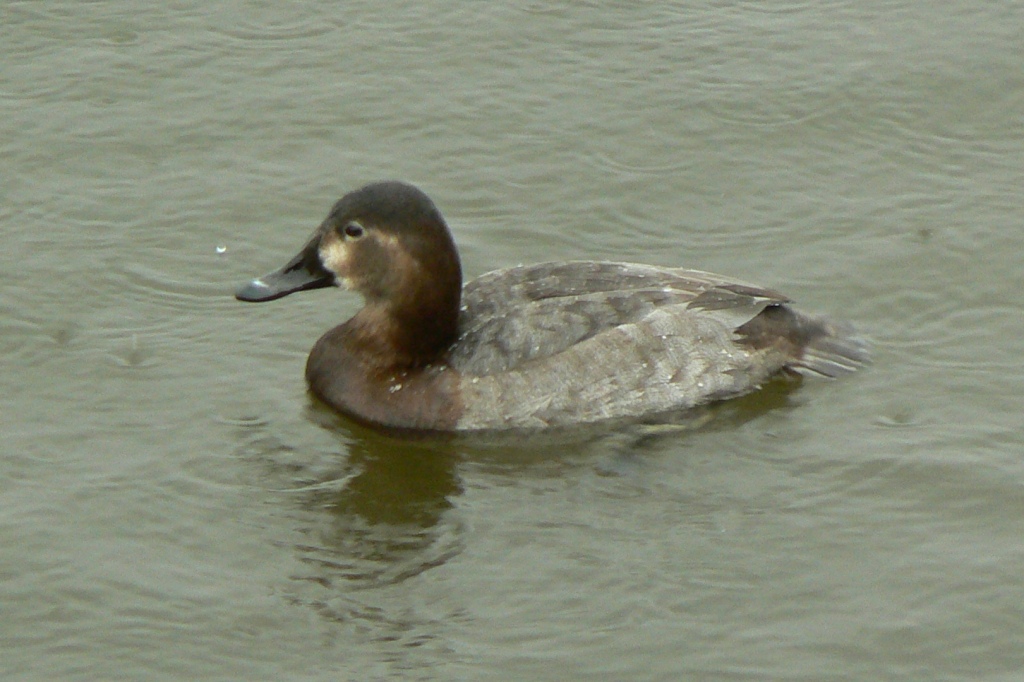

Habitat
The Tufted Duck is common throughout Europe. For much of its range it is migratory but, in the UK, it is a resident bird.
The Pochard has a much wider distribution and is migratory almost everywhere. In small areas of Britain, it is resident but most of the birds we see are winter visitors and almost all of these are male. They breed in Siberia and the males leave to fly to the UK while the females are still looking after the young. Females, when they migrate, don’t have enough time to reach Britain so they overwinter in nearer countries.
They feed by diving completely under the surface but sometimes just dabble near the surface. They eat molluscs, aquatic insects, small fish and sometimes vegetation. They are gregarious and are often seen together. The two species are known to hybridize occasionally
Other Notes
As for most of the birds associated with water, you need to visit wetland sites for these birds such as WWT sites or wildlife reserves. The Tufted Duck is more common and may sometimes be seen on ornamental lakes with the tame Mallard, Coots and Moorhens.
See also
The Scaup and Lesser Scaup are quite similar in appearance to the Tufted Duck but both are rare visitors to Britain.
Look out for [236] Red-crested Pochard.

